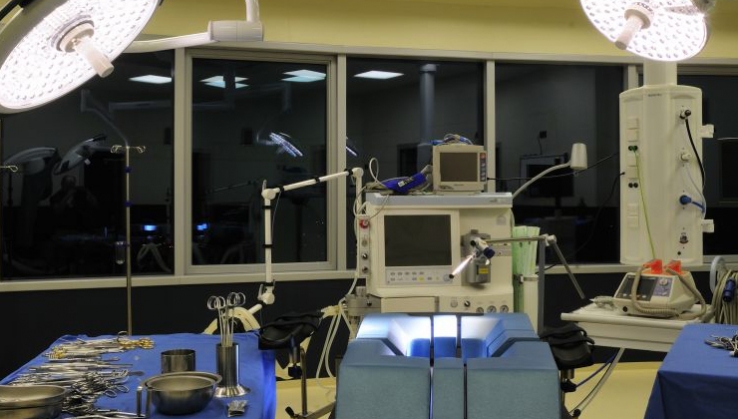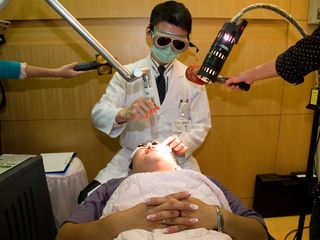The Department of Tourism plans to add another reason for more visitors to come to the country through a soon-to-be drafted “medical tourism” plan, which highlights the relatively cheap yet world-class health services some of the country’s hospitals have to offer.
In this proposed plan, DOT Secretary Ramon Jimenez aims to get the country’s medical sector to put its best foot forward by highlighting stem cell therapy as well as other areas of specialization.
“Medical tourism focuses on some very serious, important areas of healthcare that the world will travel for,” Jimenez said during a forum on stem cell science conducted at the Medical City hospital in Pasig City on Tuesday evening.
Through promoting world-class medical services in the country, such as some of Philippine hospitals’ stem cell programs, Jimenez said the DOT aims to draw foreigners into the country who, in his words, “yung sasakay sila ng eroplano, tatawid sila ng dagat.”
“(Foreigners) would obviously spend less if they sought care in their own country like the United States or (places in) Europe. So you really have to have a value that will mitigate the cost of that travel. Your service has to be superior, greater value for their money,” Jimenez said.
Jimenez was at the event because his wife Abby has a rare but mild motor neuron disease, and avails of stem cell therapy treatment herself.
The Medical City, as well as a few other hospitals, offers this type of therapy that Jimenez hopes to promote to other countries.
Stem cell therapy entails taking stem cells from a patient, a compatible donor, or from other sources. These cells are then modified to fit the specifics of the patient’s condition, and are injected into the patient’s body.
According to a primer from the Medical City’s Institute of Personalized Molecular Medicine, which handles stem cell therapies, stem cells are “master cells” that are capable of renewing themselves through cell division, and can be modified, under particular physiologic conditions, to become tissue or organ-specific cells with special functions.
Stem cells can come from three sources: bone marrow, peripheral blood (referring to blood circulating the body), and blood from the umbilical cord. These sources are the best for multi-organ repair, according to the IPMM.
Apart from the Medical City, other hospitals in the country providing stem cell therapy are the Makati Medical Center, St. Luke’s Medical Center in Taguig, and the Kidney and Transplant Institute.
A six-month program for stem cell therapy, in the Medical City at least, is priced at around P2.2-P2.5 million for disease-related services, while for the health and wellness (or aesthetic purposes), the therapy is at around P1.4-P1.6 million
It was pointed out that the treatment in other countries would be thrice as expensive as the Philippine rates.
Sam Bernal, a globally renowned cancer specialist and head of the Medical City’s IPMM also said the Philippines has the potential for medical tourism in that the requirements to offer high-quality services, at least in stem cell therapy, are already here.
“The Philippines is an ideal destination for international patients. Moreover, there is really no reason for any Filipino patient to have to travel abroad for stem cell therapy when the best technology and the best VIP treatment is available right here,” Bernal said.
In the Medical City hospital, over 315 patients have undergone stem cell therapy since 2005. Out of that number, around 17 percent or 54 people are from abroad.
Jimenez said tourists who flock to the country for medical treatment are pegged at less than 150,000, citing 2011 figures. He said that number could rise quickly if awareness about the exceptional medical services the country can offer will be raised.
According to Bernal, some foreign clientele who have undergone stem cell therapy in the hospital he works for include an American billionaire couple who failed to be cured through the services of the renowned Johns Hopkins hospital in Baltimore state; shipping magnates from Norway, and patients from Singapore and Malaysia.
Aside from promoting stem cell therapy, Jimenez said possible areas where Filipino medicine excels in and would most likely be part of the medical tourism proposal are other forms of cancer treatment, orthopedics, and dentistry.
Jimenez said should the medical tourism proposal finally be done, its execution would be drastically different from the It’s More Fun in the Philippines Campaign, which was vibrant and utilized social media to get Filipinos to advertise the country to foreigners.
“To tell you frankly as a marketing person that’s not something I would emphasize. That mood and that tone may not be totally appropriate at all times,” Jimenez said. “However, the emphasis on people will still be pretty much the same.”
The plan for promoting medical tourism in the country internationally will be through the form of road shows and direct selling of the concept.
The secretary emphasized that Filipinos will still be the selling point of the campaign, however different the style of the campaign for medical tourism will be.
“Like (the More Fun in the Philippines campaign), it is additional evidence that it is the Filipino that makes the difference. As you can see pati sa medical tourism that will be the differentiator, the skill, the professionalism ,the genius, the caring,” Jimenez said.
“Iba talaga mag-alaga ang Pilipino e, di tayo nagtatapon ng tao,” he said. “Filipinos never forget they’re dealing with people,” he also said.
Jimenez said the medical tourism plan will take around three to six months to be conceptualized and drafted, but initial moves to promote the country’s health services will be done as soon as possible, and that the DOT is “determined to develop it as it comes.” — ELR, GMA News
source: http://www.gmanetwork.com / by Gian C. Geronimo, GNA News / September 19th, 2012



